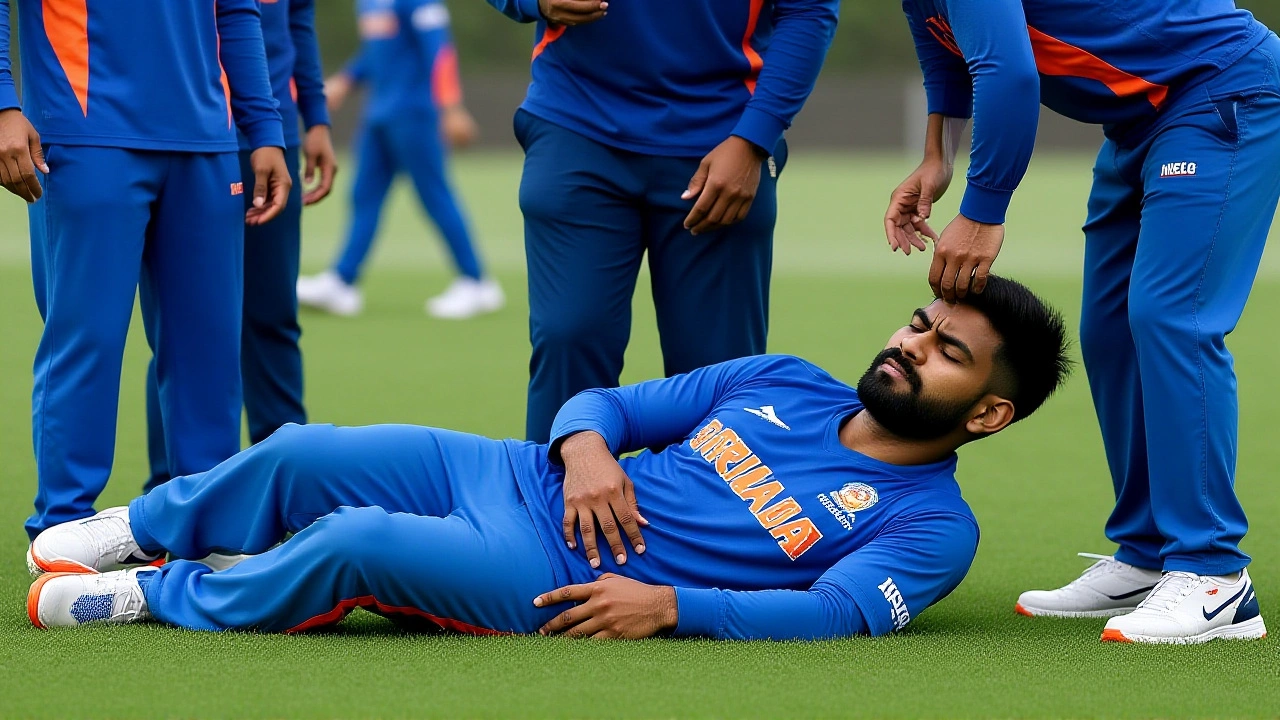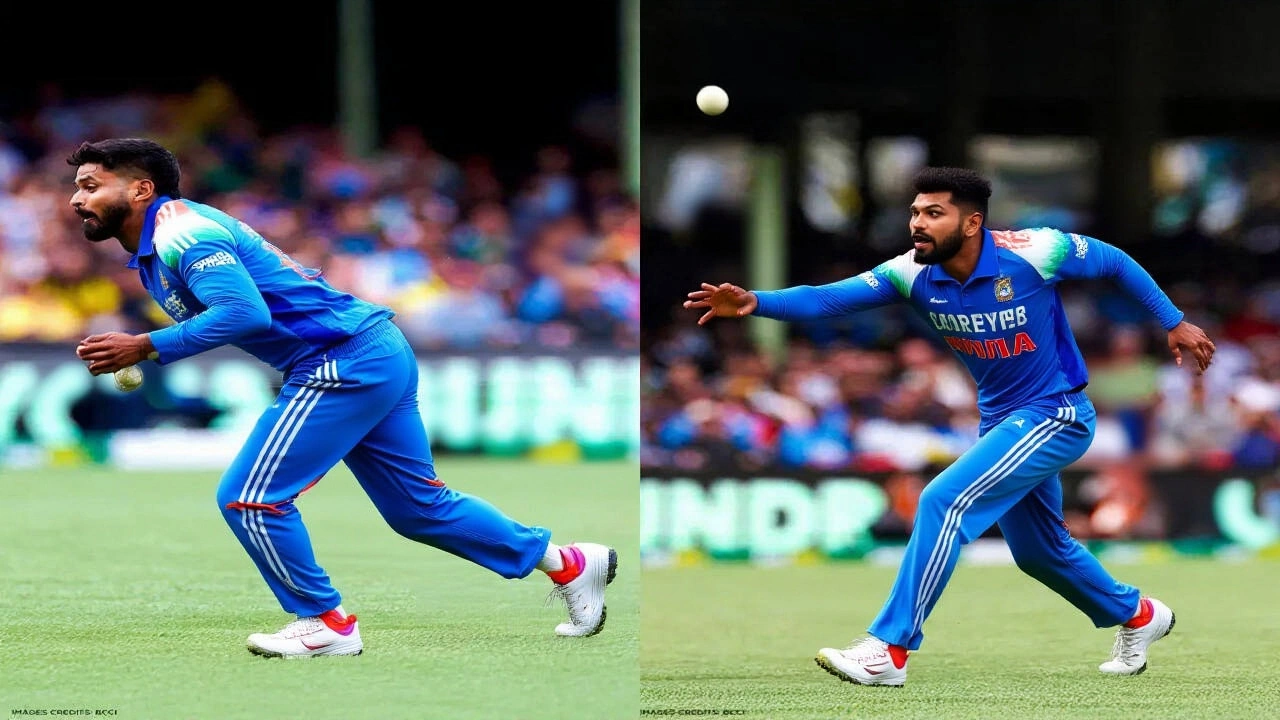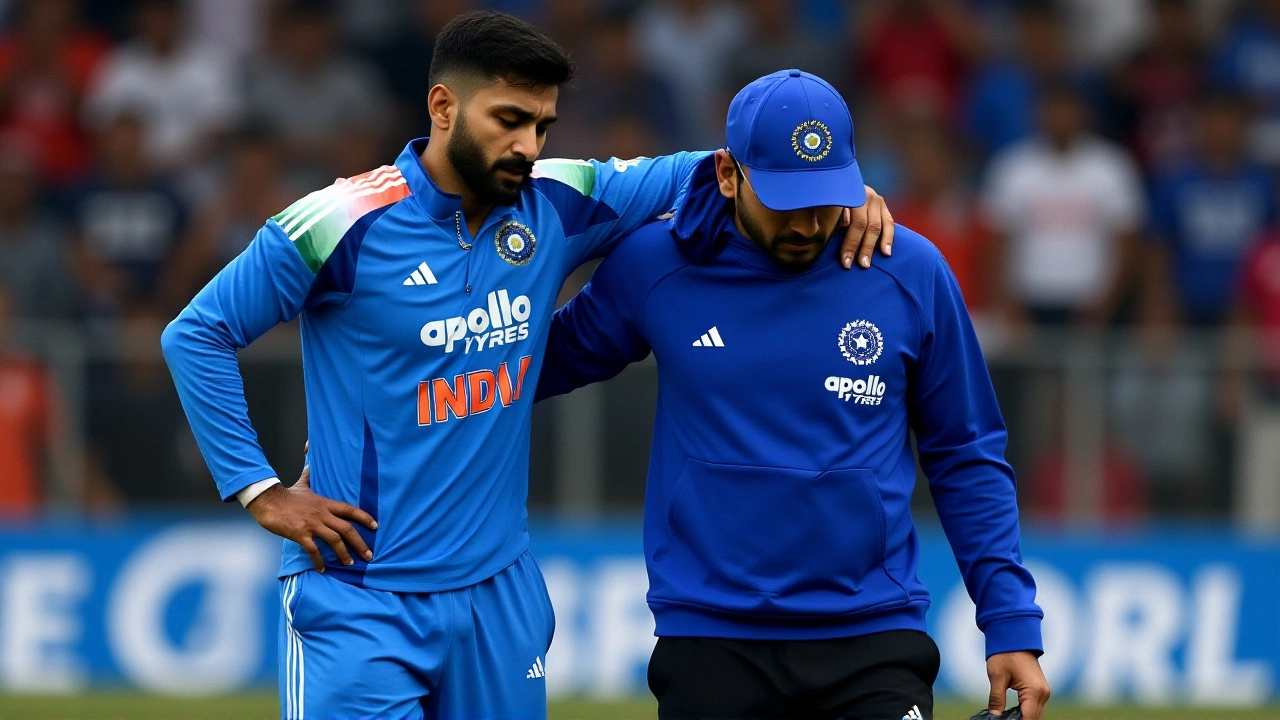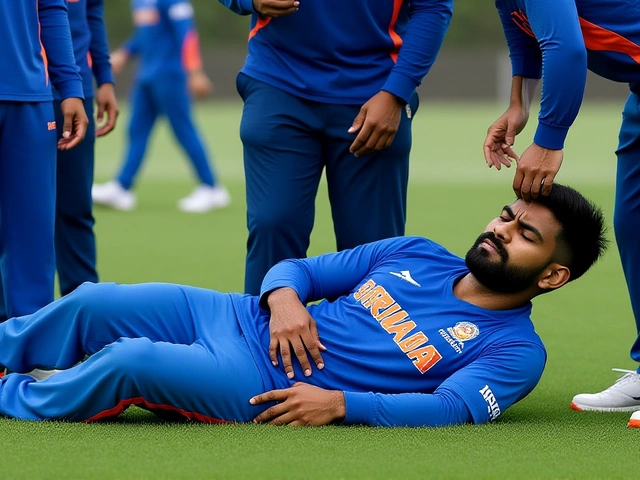Shreyas Iyer Suffers Spleen Laceration After Fielding Fall in Sydney ODI

When Shreyas Iyer, India’s ODI vice-captain, collapsed mid-field during the third One Day International against Australia at the Sydney Cricket Ground on October 25, 2025, no one imagined it was more than a bad landing. But the truth, revealed two days later, was far more serious: a lacerated spleen. The 30-year-old batter had dived to dismiss Australian wicketkeeper Alex Carey, landed hard on his left side, and immediately clutched his ribs — grimacing, silent, clearly in distress. What followed wasn’t just a routine injury assessment. It was a medical emergency.
How the Injury Happened
It happened in the 42nd over. Harshit Rana, India’s young fast bowler, bowled a low, swinging delivery outside off-stump. Carey, trying to work it through mid-wicket, edged it slightly. Iyer, stationed at backward point, sprinted across the boundary, leapt, and caught the ball cleanly. But as he came down, his left elbow and ribs absorbed the full force of the landing on the hard, unforgiving SCG turf. He didn’t scream. He didn’t call for help. He just collapsed — knees buckling, hands pressed to his side.
The medical team rushed out. By the time he was stretchered off, the crowd had fallen silent. No one clapped. No one cheered. This wasn’t a routine fielding mishap. It was the kind of moment that makes cricket fans hold their breath.
Medical Findings and BCCI’s Official Update
On October 27, 2025, at 07:55 UK time, the Board of Control for Cricket in India (BCCI) released a statement confirming what had been suspected: Iyer had suffered a laceration to his spleen. The injury, caused by blunt trauma from the fall, is serious but not immediately life-threatening — provided it’s managed correctly. Splenic lacerations can bleed internally, and even a minor tear can worsen without close monitoring.
"Shreyas Iyer is medically stable and recovering well," the BCCI said. "He remains under observation in Sydney, with our medical team in constant consultation with specialists here and in India." The team doctor, Dr. S. K. Nair, stayed behind in Sydney while the rest of the squad traveled to Canberra for the upcoming T20 series. Iyer’s parents, who live in Mumbai, booked flights immediately and are expected to arrive by Tuesday.
India’s Victory — and the Shadow of Iyer’s Absence
Even as Iyer lay in a hospital bed, his teammates were celebrating a stunning win. Chasing 236, Rohit Sharma smashed his 37th ODI century, and Virat Kohli added 74 in a 168-run partnership that crushed Australia’s hopes of a 3-0 series sweep. The win was emotional, poetic even — a farewell gift to the SCG, where India hasn’t won an ODI since 2019.
"I’ve always loved coming here," Rohit said after the match. "Bad memories, good memories. But today? Today felt right."
But the celebration was muted. Teammates kept glancing toward the dressing room. Captain Jasprit Bumrah, who was resting due to a hamstring strain, texted Iyer: "Rest well. We’ll need you when you’re back."

What This Means for India’s T20 Campaign
With the five-match T20 series starting October 29 in Canberra, Iyer’s absence is a major blow. He’s not just a middle-order anchor — he’s a tactical leader. As vice-captain, he’s often the one who takes over when the skipper is injured or resting. His calmness under pressure, his ability to rotate strike and build innings in the middle overs, is irreplaceable in the short format.
The BCCI confirmed he will not travel with the squad. His replacement, Suryakumar Yadav, will likely slot into the No. 4 role, with Riyan Parag as backup. But no one can replicate Iyer’s composure. Former captain MS Dhoni, who once said Iyer "plays like he’s got all the time in the world," tweeted: "Wishing you a swift recovery, Shreyas. The game misses you already."
Recovery Timeline and Long-Term Outlook
Splenic lacerations vary in severity. Grade 1 or 2 injuries — the most common — typically require 4 to 6 weeks of rest, no contact sports, and regular imaging to ensure no delayed bleeding. Iyer’s injury is believed to be Grade 2. That means no running, no batting practice, no fielding drills for at least a month. He won’t be ready for India’s next ODI assignment, likely the Asia Cup in November.
But here’s the twist: spleen injuries in athletes are rare — and often fully recoverable. Cricket players like David Warner and Joe Root have returned from similar trauma without long-term effects. The key? Patience. No rush. No pressure.
"He’s young, he’s fit, and he’s got the best medical support," said Dr. Anjali Mehta, a sports medicine specialist at Mumbai’s Breach Candy Hospital. "If he follows the protocol, he’ll be back stronger. But if he tries to come back early? That’s when things go wrong."

What’s Next?
India’s T20 series begins in Canberra on October 29, with matches scheduled in Melbourne, Hobart, Carrara, and Brisbane. The BCCI will issue weekly updates on Iyer’s condition. Meanwhile, the Indian team has quietly shifted its focus — not just to winning, but to holding space for their missing leader.
On the plane to Canberra, the squad left his jersey in the locker room — zipped up, neatly folded, with his name stitched on the back. Someone had placed a small cricket ball beside it. No note. Just silence.
Frequently Asked Questions
How serious is a spleen laceration in athletes?
A spleen laceration is a blunt trauma injury that can cause internal bleeding. Grade 1 and 2 injuries, like Iyer’s, are often non-surgical and managed with rest and monitoring. Recovery typically takes 4–6 weeks, but athletes must avoid contact sports during this time. Delayed rupture — though rare — can occur if activity resumes too soon.
Why is Shreyas Iyer not traveling with the team?
Iyer’s spleen injury requires strict rest and daily medical monitoring. Traveling, especially across time zones and with potential delays, increases risk. The BCCI is prioritizing his full recovery over immediate return. His team doctor remains in Sydney to oversee his progress.
Who will replace Iyer in the T20 series?
Suryakumar Yadav is expected to take over the No. 4 batting role, with Riyan Parag as backup. Neither has Iyer’s experience in high-pressure chases, but SKY’s aggressive style may compensate. The team may also rotate captaincy between Rohit Sharma and Hardik Pandya to fill the leadership gap.
Could this injury affect Iyer’s future in cricket?
Unlikely. Spleen injuries in athletes rarely lead to long-term issues if properly managed. Players like Joe Root and David Warner returned to full fitness after similar trauma. Iyer’s age, fitness, and access to top-tier medical care make a full recovery probable. The bigger risk is rushing back — not the injury itself.
When will we know if Iyer can play again?
The BCCI will release weekly updates. A return to light training is expected in 3–4 weeks, with full clearance likely by mid-November. His availability for the Asia Cup (scheduled for November 15) remains uncertain, but he’s on track to be ready for the 2026 ODI World Cup qualifiers.
Why did this happen on the SCG turf?
The SCG has one of the hardest, most compact outfields in international cricket. Unlike softer pitches in India or England, its surface offers little give. Combined with Iyer’s full-speed dive and awkward landing, the lack of cushioning turned a routine catch into a high-impact trauma. Fielding conditions are now under review by the ICC.
